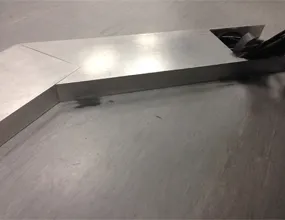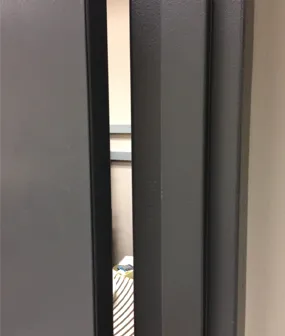Good Enough Never Was

Over the last few months while doing research for my “Light Moments” column, I have come across many mysterious unlabeled photos. Some, I was later able to identify — others remain enigmas. But none were more puzzling than those emailed to me a couple of weeks ago, with no accompanying explanation, by professor Charlie Falco.
A few days later, Charlie enlightened me. And so began my introduction to Ross Potoff, a research specialist for many years in professor Falco’s Thin Films Lab, beginning in the 1980s.
Charlie described Ross as an “extremely dedicated employee and a loyal friend.” When it came to keeping the lab in working order, Ross would let nothing stand in his way no matter how difficult the challenge. Ross was a stickler for perfection with a penchant for detail. The phrase “good enough” was not in his vocabulary, as he demonstrated daily — not only in the lab, but also in his chosen sport of competitive cycling, the subject of a future article.

Once I knew a little about Ross, Charlie’s description of the photos didn’t surprise me — well, not so much.
This photo is the perfect example of “good enough” not being good enough for Ross. The task was simple: cover the cables and water lines leading to the lab’s molecular beam epitaxy equipment used for thin film deposition. The problem (in Ross’s mind) was that a 90-degree angle between the connecting sections of aluminum would not have been aesthetically pleasing. Ross’s angle: a much more intricate machining job, resulting in an eye-catching, yet functional solution.

Have you ever tried to move that perfect piece of equipment into another room of your lab to find that the doorway is too narrow? And, to add to your frustration, UA Facilities Management’s schedule is so full that they can’t even come to evaluate the situation for six months? Well, if you are Ross and that perfect piece of equipment happens to be an 18-kilowatt rotating anode X-ray generator, you wait until everyone has left for the night, then you take things into your own hands.
And, if you are Charlie, you come in the next morning to find your X-ray generator neatly tucked away in its new location — seemingly magically. Overnight, Ross had sliced through the wall plaster and metal doorframe, moved the machine, welded the doorframe back together, repaired the wall and repainted.
Incidentally, even after retiring two years ago, Ross still shows up at the lab from time to time and Charlie can still count on his keen ingenuity.
